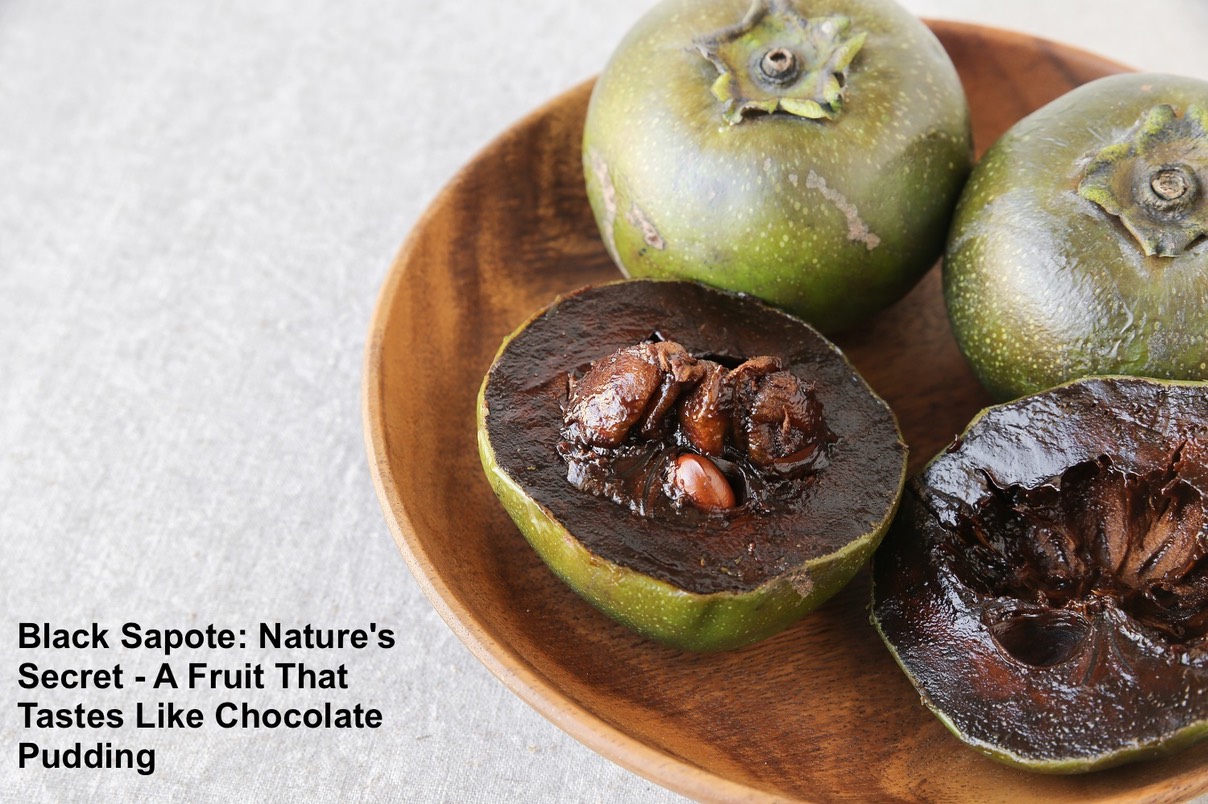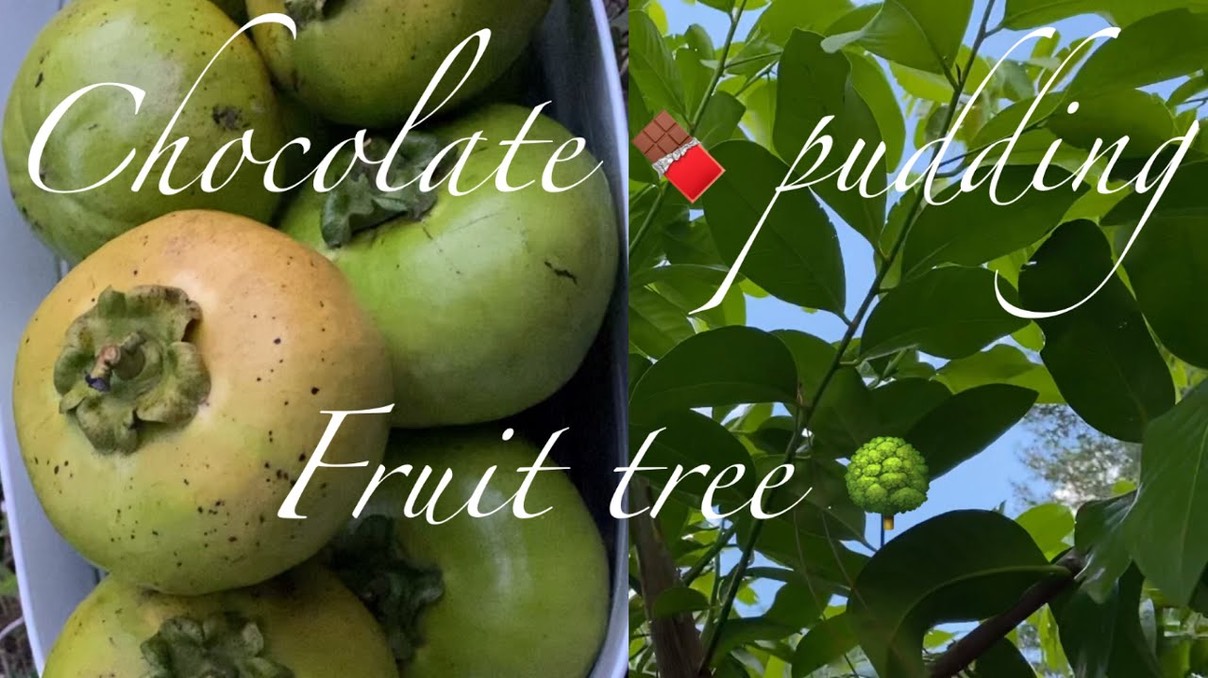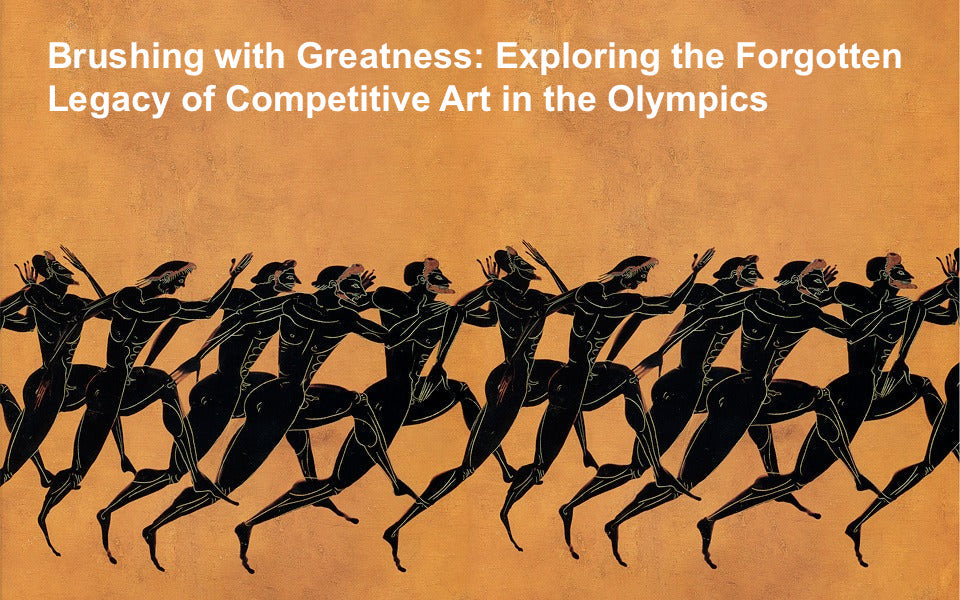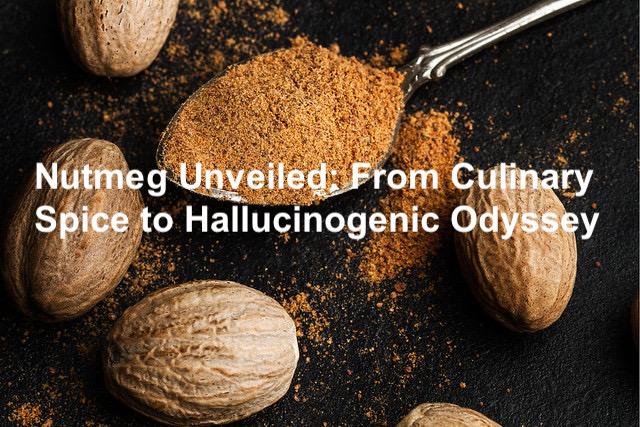Did You Know
Black Sapote: Nature's Secret - A Fruit That Tastes Like Chocolate Pudding

Embark on a culinary adventure as we unveil the hidden gem of the rainforests – the Black Sapote. This remarkable fruit not only tantalizes the taste buds with a chocolate pudding flavour but also brings a wave of nutritional benefits and sustainability to the table. Join us in exploring the guilt-free indulgence that redefines dessert.
Discover the extraordinary Black Sapote, a fruit that tastes like chocolate pudding, offering a guilt-free indulgence with a rich flavour profile. Unveil its nutritional benefits and sustainability, as we delve into culinary creativity. Elevate your dessert experience naturally with this rainforest treasure.
Unveiling the Guilt-Free Indulgence: A Fruit That Tastes Like Chocolate Pudding

In the realm of gastronomy, where taste buds are constantly seeking new and exciting experiences, there exists a hidden gem that promises a delightful surprise – a fruit that tastes like chocolate pudding. As we delve into the world of unique and exotic fruits, prepare to be amazed by the discovery of this guilt-free indulgence that effortlessly combines the goodness of nature with the rich flavours of everyone's favourite dessert.
The Mystery Unveiled: Imagine savouring the luscious taste of chocolate pudding without the guilt associated with indulging in decadent desserts. This extraordinary fruit, known by the name "Black Sapote" or "Chocolate Persimmon," is the source of this delectable revelation. Native to the rainforests of Central and South America, the Black Sapote is making waves in culinary circles for its uncanny ability to mimic the velvety richness of chocolate pudding.
Flavour Profile: The magic of the Black Sapote lies in its unique flavour profile. When ripe, the fruit's flesh transforms into a smooth, dark brown consistency reminiscent of chocolate mousse. Contrary to its appearance, the taste is not overpoweringly sweet but rather a perfect balance of sweetness with hints of vanilla, creating an exquisite culinary experience that captivates the palate.
Nutritional Benefits: Beyond its remarkable taste, the Black Sapote offers a plethora of nutritional benefits. Packed with vitamins, minerals, and antioxidants, this fruit is a powerhouse of health. It's an excellent source of dietary fibre, promoting digestive health, and contains essential nutrients like vitamin C and potassium. Embracing this chocolate-flavoured fruit not only satisfies your sweet cravings but also contributes to your overall well-being.
Culinary Applications: The versatility of the Black Sapote extends to its culinary applications. Embrace your creativity in the kitchen by incorporating this unique fruit into a variety of dishes. The possibilities are endless, from chocolate-flavoured smoothie bowls to Black Sapote-infused ice creams. The fruit's adaptability makes it a perfect ingredient for both sweet and savoury recipes, adding a distinctive twist to your culinary repertoire.
A Sustainable Indulgence: In an era where sustainability is at the forefront of our choices, the Black Sapote emerges as a guilt-free indulgence with minimal environmental impact. Thriving in tropical climates, this fruit is cultivated with relative ease, offering a sustainable alternative to imported, resource-intensive chocolate products.
As we unravel the mysteries of the culinary world, the discovery of a fruit that tastes like chocolate pudding stands as a testament to the wonders nature has to offer. The Black Sapote, with its alluring flavour, nutritional benefits, and sustainable qualities, invites us to embark on a journey of gastronomic delight while making conscious choices for our well-being and the planet. Indulge in the magic of this chocolate-flavoured treasure and redefine your dessert experience with a touch of nature's brilliance.
As we conclude our journey into the world of Black Sapote, the chocolate-flavoured revelation, we invite you to embrace this unique fruit's magic. From its versatile culinary applications to its sustainable qualities, Black Sapote promises a guilt-free indulgence that harmonizes taste, nutrition, and environmental consciousness. Redefine your dessert experience with the richness of nature's brilliance.
#BlackSapote #ChocolateFruit #GuiltFreeIndulgence #RainforestTreasure #CulinaryAdventure #SustainableEating #ChocolatePudding #ExoticFruits #NatureInspired #DessertRevolution #SanjayMohindroo
From Beacon to Icon: Unraveling the Statue of Liberty's Lighthouse Legacy
In the grand tapestry of American history, the Statue of Liberty stands as an emblem of freedom. However, beneath her serene exterior lies a captivating chapter – a time when Lady Liberty served as a functional lighthouse, guiding ships through the New York Harbor. Let's embark on a journey to uncover this lesser-known facet of her illustrious history.
Explore the hidden history of the Statue of Liberty, once a guiding light in the treacherous waters of New York Harbor. This article unveils the fascinating transition from lighthouse to global symbol, showcasing the convergence of art and functionality in America's most iconic statue.
Unveiling the Hidden History: The Statue of Liberty's Illuminating Past as a Lighthouse
In the bustling narrative of American history, the Statue of Liberty stands as an enduring symbol of freedom and democracy. Yet, concealed within the folds of Lady Liberty's majestic robe lies a lesser-known chapter – a chapter that reveals her initial role as a lighthouse, casting a guiding light over the waters that surround her.
Constructed in France and gifted to the United States in 1886, the Statue of Liberty was conceived by sculptor Frédéric Auguste Bartholdi as a beacon of liberty and hope. However, what many may not realize is that before she became an iconic symbol welcoming immigrants to the shores of New York, she served a practical purpose as a fully functioning lighthouse.
The transformation of the Statue of Liberty into a lighthouse was not merely symbolic; it was a strategic move to enhance maritime safety. In 1886, an electric light was installed in the torch, illuminating the night sky and providing a vital navigational aid for ships navigating the treacherous waters of New York Harbor. This innovative use of the statue showcased a fusion of art and functionality, underlining the commitment to progress and safety in the late 19th century.
Despite her critical role as a guiding light, the Statue of Liberty's time as a lighthouse was relatively short-lived. By 1902, advancements in technology rendered the statue's lighting system obsolete. The original torch, once ablaze with electric brilliance, was extinguished, and Lady Liberty transitioned into her more familiar role as a symbol of freedom.
The Statue of Liberty's evolution from a lighthouse to a universal emblem of liberty is a testament to the adaptability and resilience inherent in symbols that transcend time. Her luminous history as a guiding light reminds us that even in the face of change, the pursuit of freedom remains a constant. As we gaze upon the Statue of Liberty today, let us not only see a magnificent sculpture but also appreciate the layers of history and purpose that have shaped this enduring icon. In every beam of her torch, we find not only the light that guided ships to safety but also the eternal flame of liberty that continues to inspire us all.
As we reflect on the Statue of Liberty's evolution from a lighthouse to a universal symbol of liberty, we find a tale of adaptability and resilience. Her luminous history not only guided ships but also illuminated the enduring pursuit of freedom. The torch that once lit the way for mariners now symbolizes the eternal flame that inspires us all.
#StatueOfLiberty #LighthouseLegacy #FreedomSymbol #AmericanHistory #IconicStatue #HeritageUnveiled #LadyLiberty #MaritimeHistory #ArtAndFunction #GuidingLight #GoodOldBandit #GudOlBandit #SanjayMohindroo
Harmony in Silence: The Tale of Spain's Wordless National Anthem
In the symphony of national anthems, Spain's "Marcha Real" stands as a unique composition, devoid of lyrics yet rich in historical and cultural resonance. This blog post unravels the captivating story behind the absence of words in the Spanish national anthem, exploring the symbolism, musical mastery, and global recognition that make it a remarkable and distinctive piece.
Discover the intriguing narrative behind Spain's wordless national anthem, the "Marcha Real." This blog post delves into the anthem's historical evolution, symbolic significance, and global acclaim, shedding light on why its eloquent silence makes it a standout masterpiece in the world of national anthems.
Unveiling the Eloquent Silence: The Spanish National Anthem's Wordless Symphony
In the realm of national anthems, where stirring lyrics often accompany patriotic melodies, Spain stands out with a unique and distinctive feature—the absence of words in its national anthem. Unlike many countries that use poetic verses to encapsulate their history, values, and aspirations, Spain's anthem relies solely on its instrumental prowess, creating a powerful and evocative piece that speaks volumes through its resounding silence.
The Historical Journey:
To truly understand the significance of Spain's wordless national anthem, one must delve into its rich historical tapestry. The anthem, known as the "Marcha Real" or Royal March, has a lineage dating back to the late 18th century. Initially a military march, it gained prominence during the reign of King Alfonso XIII in the early 20th century.
Despite its historical roots, the "Marcha Real" underwent various transformations, with different composers leaving their mark on its evolution. The absence of lyrics is not a recent development; rather, it is a deliberate choice that has endured through the ages.
Symbolism of Silence:
The decision to keep the Spanish national anthem devoid of words holds profound symbolic significance. The wordless symphony serves as a unifying force, transcending linguistic, regional, and cultural differences that characterize the diverse tapestry of Spain. In a nation known for its vibrant and autonomous regions, the absence of lyrics allows every citizen to find their interpretation of the anthem, fostering a sense of unity without imposing a singular narrative.
Musical Mastery:
The "Marcha Real" is a masterpiece in its own right, composed in the key of F major with a majestic tempo. Its soaring notes evoke a sense of grandeur, befitting a nation with a rich history and cultural heritage. The absence of words enables the music to speak directly to the heart, allowing listeners to connect with the anthem on a visceral level.
Global Recognition:
Spain's wordless anthem has not gone unnoticed on the global stage. Its distinctiveness has garnered attention and admiration, with many acknowledging the power and beauty encapsulated in the absence of lyrics. In international events, Spanish athletes and dignitaries stand tall and proud as the "Marcha Real" plays, representing a nation that communicates its identity through the universal language of music.
In a world where national anthems often convey identity through lyrical expression, Spain's decision to embrace the eloquent silence of its wordless anthem sets it apart. The "Marcha Real" stands as a testament to the power of music to transcend linguistic boundaries and speak to the soul. In its majestic notes, one can hear the echoes of Spain's storied past and the promise of a united future—a silent anthem that resonates with the spirit of a nation.
In a world where national anthems often convey identity through lyrical expression, Spain's choice to embrace the eloquent silence of its wordless anthem sets it apart. The "Marcha Real" stands as a testament to the power of music to transcend linguistic boundaries and
#SpainNationalAnthem #MarchaReal #WordlessAnthem #MusicalHeritage #CulturalIdentity #SymphonyOfSilence #NationalPride #HistoricalEvolution #UnityInMusic
Brushing with Greatness: Exploring the Forgotten Legacy of Competitive Art in the Olympics

Step into the overlooked corridors of Olympic history, where creativity met competition. In the early 20th century, the Olympic Games were not only a showcase of athletic prowess but also a celebration of artistic excellence. Competitive art once graced the grand stage of the Olympics, weaving a narrative that transcended physical boundaries.
Uncover the hidden tale of Competitive Art in the Olympics – a journey of creativity, controversy, and ultimate exclusion. From its humble beginnings to the reasons behind its removal, delve into a captivating chapter of the Olympic legacy that blended athleticism with artistry.
The Forgotten Canvas: Competitive Art as an Olympic Sport
In the annals of Olympic history, there exists a chapter that might seem unconventional yet intriguing - the era when competitive art was an official Olympic sport. While contemporary Olympic Games showcase physical prowess and athletic excellence, there was a time when the creativity and skill of artists were also celebrated on this global stage.
The Genesis of Competitive Art in the Olympics:
The roots of competitive art in the Olympics can be traced back to the early 20th century. The founder of the modern Olympic Games, Pierre de Coubertin, envisioned the Olympics as a platform to celebrate not only physical strength but also intellectual and artistic achievements. As a result, art competitions were introduced as part of the Olympic program, encompassing various categories such as painting, sculpture, literature, architecture, and music.
The Historical Significance:
The inclusion of competitive art in the Olympics aimed to promote a holistic appreciation of human capabilities, acknowledging the artistic endeavours that complemented athletic feats. Artists from around the world were invited to submit their works for judging, and the winning pieces were awarded medals, just like their athletic counterparts.
Reasons for Removal:
The journey of competitive art in the Olympics was short-lived. The last time art featured as a medal event was in the 1948 London Olympics. There were several reasons for its removal, ranging from practical issues to evolving perceptions of the Games.
One primary challenge was the subjective nature of art evaluation. Unlike traditional athletic events with clear winners and losers, art is subjective and open to interpretation. This led to controversies and disputes over the judging process, diminishing the credibility of art competitions within the Olympic framework.
Additionally, logistical challenges, such as the transportation and display of artwork, proved to be cumbersome for the Olympic organizers. The practicalities of managing an art competition alongside the multitude of athletic events became increasingly impractical.
Origins of Competitive Art's Demise:
As the Olympic movement continued to evolve, there was a shift towards a more streamlined and commercially viable approach. The focus shifted towards attracting larger audiences and corporate sponsorships, making the inclusion of art competitions less appealing.
Furthermore, the emphasis on amateurism in the Olympic Games played a role in the removal of competitive art. The definition of amateurism in art proved to be more complex than in sports, leading to further complications and controversies.
While competitive art may no longer have a place in the modern Olympics, its brief inclusion stands as a testament to the vision of the Games' founder, Pierre de Coubertin. The era when artists and athletes shared the same podium might be a relic of the past, but it remains an intriguing chapter in the rich tapestry of Olympic history. As we marvel at the physical feats of today's Olympians, let us not forget the time when the canvas was as important as the track, and the brush wielded as proudly as the javelin.
Though the canvas may no longer share the spotlight with the track, the era of competitive art in the Olympics remains a captivating footnote in sporting history. Join us as we reflect on a time when the brush was as mighty as the javelin and the artist stood shoulder to shoulder with the athlete on the Olympic podium.
#OlympicArt #CreativeLegacy #CompetitiveArtistry #OlympicHistory #BrushingWithGreatness #ArtAndAthletics
Nutmeg Unveiled: From Culinary Spice to Hallucinogenic Odyssey

Step into the enigmatic world of nutmeg, a spice renowned for its warm, aromatic notes in holiday recipes and beverages. Beyond its culinary charm lies a hidden facet that few are aware of – nutmeg's potential to induce hallucinogenic effects. In this exploration, we unravel the history, chemical secrets, and cautionary tales surrounding nutmeg's unexpected journey from spice cabinet to altered states of consciousness.
Discover the dual identity of nutmeg in this captivating blog post. Uncover the spice's rich history, delve into its chemical composition, and explore the lesser-known hallucinogenic effects that lurk behind its culinary allure. Approach Nutmeg's intriguing journey with caution and gain insights into responsible exploration. A fascinating exploration of nutmeg-like never before!
Unveiling the Mysteries: Nutmeg as an Unlikely Hallucinogen
In the realm of culinary delights and spice cabinets, nutmeg is a familiar name. Often relegated to the background of holiday recipes or sprinkled atop a warm cup of eggnog, this unassuming spice has a surprising side that many are unaware of – its potential to induce hallucinogenic effects. Today, we delve into the depths of nutmeg, exploring its history, chemical composition, and the lesser-known aspects that make it a subject of intrigue.
The Origins of Nutmeg: Nutmeg, derived from the seed of the evergreen Myristica fragrans tree, has a rich history dating back centuries. Hailing from the Moluccas, or Spice Islands, nutmeg was a highly prized commodity during the spice trade era. It found its way into the kitchens of diverse cultures, cherished for its warm, aromatic flavor. Little did they know that beyond its culinary allure, nutmeg held the potential for an entirely different experience.
Chemical Composition: The key to nutmeg's unexpected hallucinogenic properties lies in its chemical composition. Myristicin, a compound found abundantly in nutmeg, is a natural psychoactive substance. When consumed in substantial quantities, myristicin undergoes metabolic changes in the body, giving rise to a unique set of effects that extend beyond the spice's traditional uses.
The Hallucinogenic Journey: Consuming nutmeg for its hallucinogenic effects is not a new phenomenon. Throughout history, various cultures have explored the spice for its mind-altering potential. However, it is crucial to note that the line between a culinary delight and a hallucinogen is thin, and the dosage plays a pivotal role in determining the outcome.
Cautionary Tales: While nutmeg's hallucinogenic properties are intriguing, caution must be exercised. The journey from the spice cabinet to the altered state of consciousness is not without risks. Excessive consumption can lead to unpleasant side effects, ranging from nausea and dizziness to more severe outcomes such as increased heart rate and hallucinogenic toxicity. Individuals must approach the exploration of nutmeg's hallucinogenic potential with a thorough understanding of its effects and potential consequences.
A Word of Caution: In the pursuit of novel experiences, it is essential to approach nutmeg with respect and caution. The transition from spice to hallucinogen is not a straightforward one, and the consequences of misjudgment can be severe. Responsible exploration, informed decision-making, and awareness of individual tolerance levels are paramount.
Nutmeg, with its dual identity as a culinary staple and a potential hallucinogen, invites us to reconsider the boundaries of our spice cabinets. As we navigate the diverse realms of gastronomy, it is crucial to approach the unexplored with a sense of curiosity tempered by prudence. Nutmeg, in all its perplexing glory, serves as a reminder that the world of flavors is as intricate and nuanced as the experiences it has to offer.
As we navigate the delicate balance between culinary delight and psychedelic potential, nutmeg emerges as a spice that transcends traditional boundaries. This blog post serves as a cautionary guide, urging readers to approach the enigmatic world of nutmeg with both curiosity and responsibility. Unveil the mysteries of nutmeg and appreciate the intricate tapestry of flavors that the spice cabinet conceals.
#NutmegRevelations #HallucinogenicSpice #CulinaryAlchemy #SpiceCabinetSecrets #PsychoactiveNutmeg #ResponsibleExploration #FlavorfulJourney